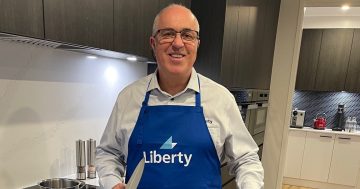Isabelle Lane says reverse mortgages have become increasingly popular since the global financial crisis, but the initial gloss can wear off in later years.
 Reverse mortgages can help older Australians stay in their homes for longer, but a new report has found they don’t come without risk.
Reverse mortgages can help older Australians stay in their homes for longer, but a new report has found they don’t come without risk.
A review by corporate watchdog ASIC of more than 17,000 of these mortgages, which allow retirees to exchange equity in their homes for cash, found many people fail to understand the risks and future costs of their loan.
Reverse mortgages can improve retirement lifestyle and meet immediate financial goals.
However, “longer-term challenges exist”, the regulator found.
Many of the retirees surveyed “failed to consider how their loan could impact their ability to afford their possible future needs”.
Lenders were also to blame for the lack of understanding, and needed to do more to ensure borrowers were adequately prepared.
“For nearly all of the loan files we reviewed, the borrower’s long-term needs or financial objectives were not adequately documented,” ASIC said.
Deputy Chair of ASIC, Peter Kell said that while reverse mortgage products could help many people achieve a better quality of life in retirement, more needed to be done to protect consumers.
Lenders and brokers needed to make inquiries that would lead to a genuine conversation with customers about their possible future needs, not just a set of tick boxes.
Reverse mortgages allow owner-occupiers to free up equity by borrowing against the value of their home.
Unlike a traditional mortgage, the loan does not need to be repaid in instalments, and the lender instead recoups costs and interest after the property has been sold.
This happens either because it has been vacated or the owner has died.
According to ASIC, consumer demand for reverse mortgages has grown gradually since the global financial crisis.
The total figure of these loans in Australia has risen from $1.3 billion in March 2008 to $2.5 billion by December 2017.
However, ASIC warns that taking out a reverse mortgage can result in financial difficulty later in life for the following reasons.
Interest rates and ongoing fees are generally higher than the average home loan.
Your debt will increase as interest rates rise on your loan.
The effect of compound interest means your debt can increase quickly as the interest compounds over the term of the loan.
If the value of your home does not rise, or it falls in value, you will have less money for your future needs, like aged care or medical treatment.
The loan may affect your pension eligibility.
If you have a fixed-interest rate loan, the costs to break your agreement can be very high.
In May’s Federal Budget then-Treasurer, Scott Morrison announced an $11 million expansion of the Pension Loan Scheme.
This scheme provides Government-backed reverse mortgages to all people aged 65 and over.
Under the scheme, both full-rate pensioners and self-funded retirees can take out a Government-backed reverse mortgage.
This unlocks some of the value stored in their house without affecting their eligibility for the pension or other benefits.
Pensioners who use the scheme can increase their fortnightly income to 150 per cent of the age pension.
“Full-rate pensioners will be able to support their income by up to $11,799 (singles) or $17,787 (couples) each year by unlocking the equity in their home,” the Budget papers state.
*Isabelle Lane is a journalist who writes for the New Daily.
This article first appeared at thenewdaily.com.au











